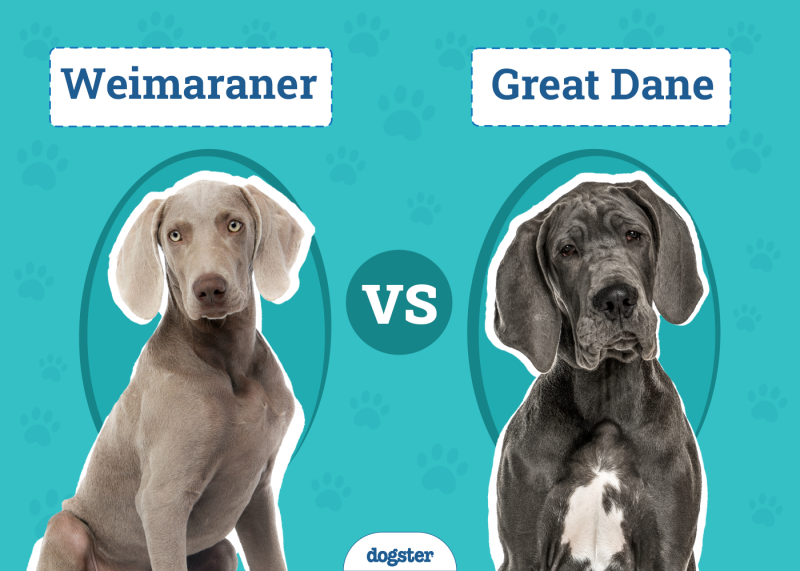In this article
View 2 More +The Pit Bull’s impressive build is intimidating, and they make the headlines often when it comes to “dangerous dogs.” However, they are not the only breed responsible for the 4.5 million cases of dog bites recorded in the United States each year.1 In fact, this can be one of the most lovable and kid-friendly breeds on the earth. But given their great physical strength, impressive jaw, and hound-like appearance, one can easily deduce that their bite will cause more damage than that of a Chihuahua. But how strong is a Pit Bull’s bite force?
Unfortunately, there is very little absolute data on the bite force of Pit Bulls or on that of other dogs. Let’s take a look at some facts about Pitties’ bites, PSI measurements, and other known data and unfounded facts about these impressively powerful dogs.

What Science Says About Dog Bite Force

There have unfortunately been very few scientific studies on the bite force of specific dog breeds. One official study focused on police dogs—specifically German Shepherds and Belgian Malinois Dogs. The trained police dogs ran 25 meters and bit down on their trainers’ sleeves, which were fitted with three force sensors, and the force measured in Newtons (N). The German Shepherds’ median bite force was recorded as 360.4 N, and the Malinois’ was 247.0 N.2
While there are claims that some dogs have bite forces with shocking numbers (over 3,000 N), they are unfounded or at least highly exaggerated, with no scientific sources to back these figures.
The American Veterinary Medical Association (ASPCA) cited other studies to counteract some of these statistics, including a study published in the Journal of the American Veterinary Association.
This study focused on fatal dog attacks and noted the difficulties in identifying different breeds (especially mixed breeds) and calculating a bite rate.3 Researchers noted that there is no consistent data across dog breeds and bites, especially when the injury is not severe enough to require an emergency room visit.
But what about bites so severe they lead to death? According to this study, the factors that can affect bite forces include the size and shape of the skull and the body weight of the dog. Pit Bulls are, therefore, likely to cause more damage in a single bite due to their morphology. But that doesn’t mean they’re more aggressive than other dog breeds; they are merely overrepresented in the statistics.
Indeed, most canine experts agree that there are no bad dogs, only bad behavior from poor training. Their bite is often the result of fear and anxiety, rather than aggression.
It is, therefore, the actions of the owners that must be questioned and not the inherently aggressive nature of a breed. Some Pit Bull owners condition their dogs to become aggressive. Puppies are put on an endurance diet that involves starving them of food and giving them physical scolding to, finally, reward their aggressive behavior. Others unintentionally cause their dogs to become anxious, fearful, or reactive due to poor training or socialization.
Interestingly, a study by the American Temperament Test Society (ATTS) found that the Pit Bull achieved a temperament score of 87.4%, while that of the general dog population peaked at 80.4%. Clearly, this means that Pit Bulls are “nicer” than the average dog.


Which Animals Have the Strongest Bite?
National Geographic’s Dr. Brady Barr has studied animal bites, testing humans, domestic dogs, and wild animals alike. Based on the research by Dr. Barr, the Pit Bull has a jaw power of around 242 pounds per square inch (PSI). By comparison, a wolf has a bite force of roughly 400 PSI, and a shark around 600 PSI.
- Humans: 120 PSI
- Wild Dogs: 310 PSI
- White sharks: 600 PSI
- Hyenas: 1,000 PSI
- Crocodiles: 2,500 PSI
- Large domestic dogs: 320 PSI (on average)
A German Shepherd, a Pit Bull, and a Rottweiler were tested using a bite sleeve equipped with a specialized computer. It turns out that the Pit Bull’s bite exerted less pressure than the other two breeds. Researchers at Guelph University in Ontario, Canada, have also shown that dogs’ jaw strength is proportional to their skull size, regardless of breed. This means that Pit Bulls and Labradors would be expected to have similar jaw power.

The Biggest Myths About the Pit Bull
As you know, there are many myths surrounding this powerful dog. Let’s list the main ones.
1. The Pit Bull Is a Breed of Dog
The Pit Bull is not a recognized breed but rather a description that brings together several purebreds or crossbreeds: American Bull Terrier, Staffordshire Bull Terrier, American Staffordshire Terrier, etc.
2. The Pit Bull Is a Dangerous Dog
The Pit Bull is no more dangerous than any other dog, and we must avoid generalizing and affixing such labels. With good breeding, socialization, and training based on positive reinforcement, the Pit Bull can make an excellent family dog as long as their daily needs are met.
3. The Pit Bull Has a Jaw That Locks
People often hear that the Pit Bull’s jaw locks when they bite. Rest assured, this is a common belief that is wrong. The jaw of this type of dog does indeed have strong muscles, but it has no locking mechanism. This trait does not exist in any breed of dog.
4. The Pit Bull Needs Different Training
Although they are strong dogs, Pit Bulls do not need any training different from other dogs. But, just as the effects of their bite can be worse due to their size, the results of poor training and leadership will be more difficult to cope with. They need to be taught the basic commandments and good manners with methods based on positive reinforcement. In addition to being effective, these allow you to develop a beautiful bond with your animal. Methods based on punishment and force should always be avoided.


Conclusion
While it’s not easy to measure a dog’s bite force, Pit Bulls are believed to have a bite force of around 242 PSI, which ranks them as the average dog of this size. Nonetheless, with so many pounds of pressure, and due to their weight and skull shape, their bite is likely to inflict more damage than one from a smaller dog.
On the other hand, these playful, protective, and child-loving dogs do not deserve their bad reputations as aggressive and bloodthirsty animals, especially if they are raised by fair, firm, and experienced owners.
Featured Image Credit: J.A. Dunbar, Shutterstock





















